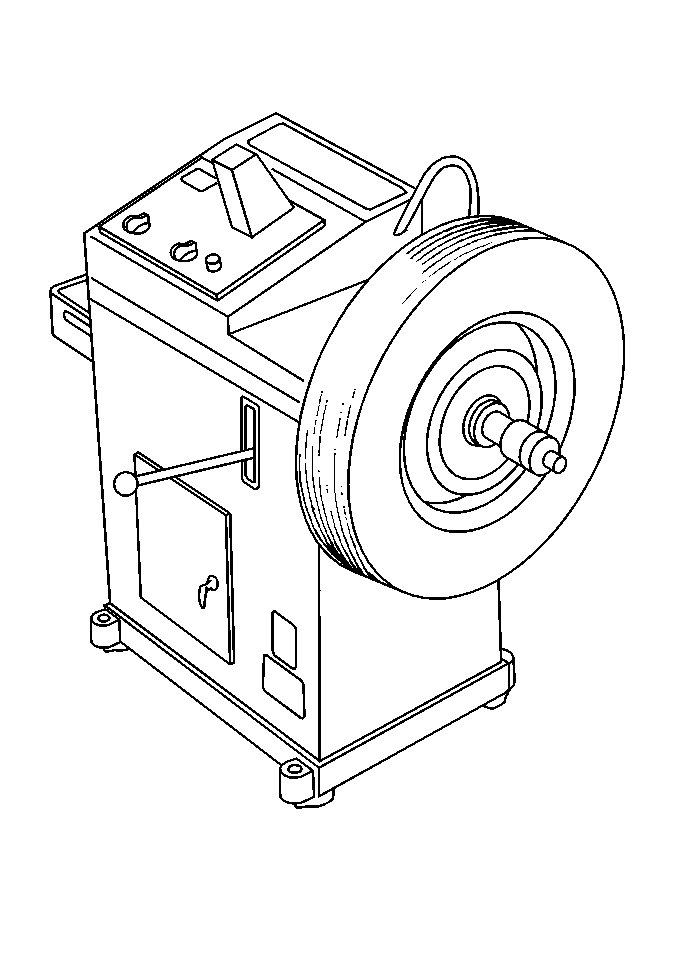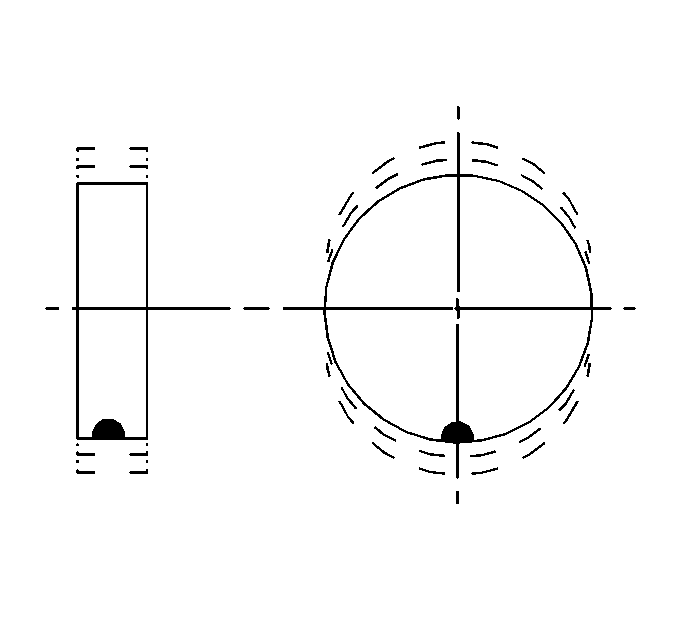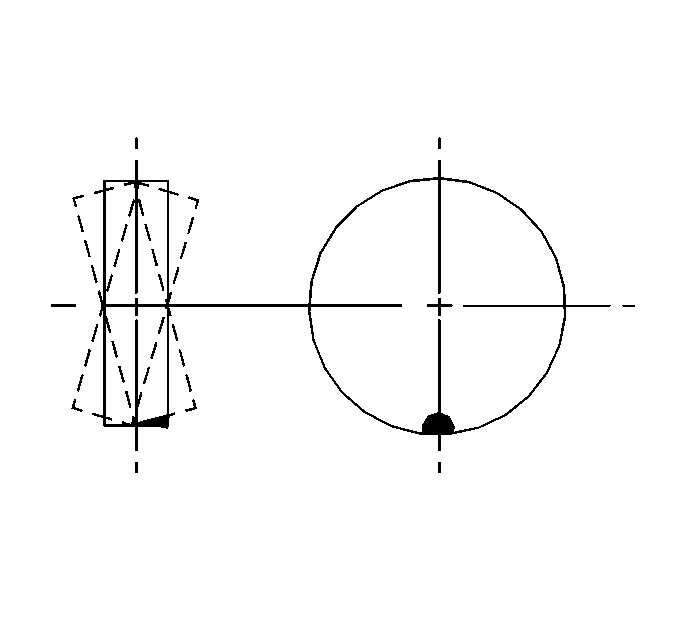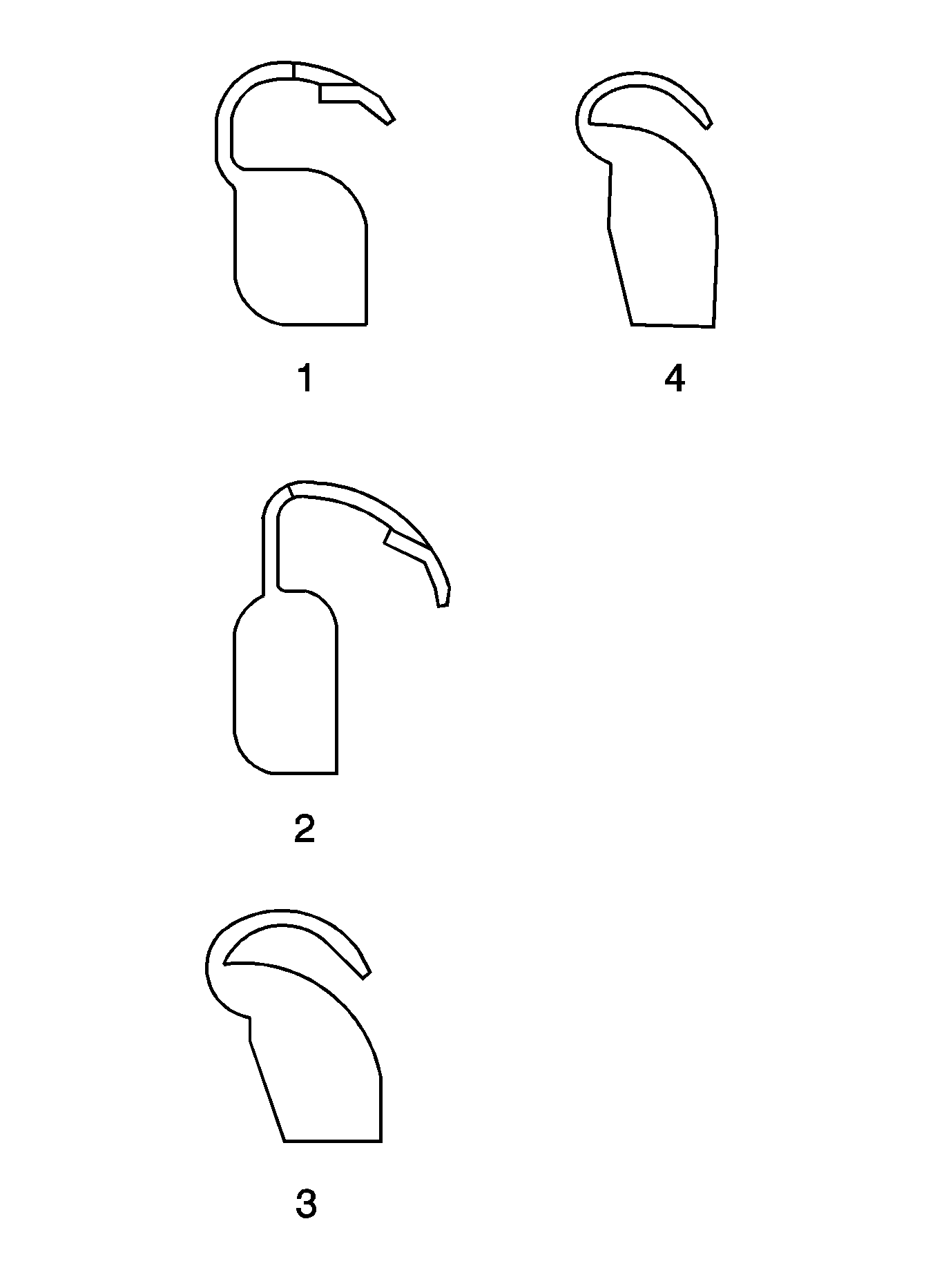Caution: Failure to adhere to the following precautions before tire balancing
can result in personal injury or damage to components:
• Clean away any dirt or deposits from the inside of the wheels. • Remove any stones from the tread. • Wear eye protection. • Use coated weights on aluminum wheels.
Important: You may balance the tires either on-vehicle or off-vehicle, but the off-vehicle balancing procedures are recommended. Off-vehicle methods are better because tire rotation will not affect the balancing. The off-vehicle balancers are also more accurate than the on-vehicle balancers. Off-vehicle balancers can perform dynamic balancing as well as static balancing.
Tire and wheel balancers can drift out of calibration without warning, or can become inaccurate as a result of abuse. The balancer calibration should be inspected every two weeks, and whenever the readings are questionable.
Tire Balancer Calibration Test
- Spin the balancer without a wheel or any of the adapters on the shaft.
- Inspect the balancer readings.
- Balance a tire and wheel assembly that is within radial and lateral tolerances to ZERO.
- Add a 3-ounce test weight to the wheel at any location.
- Spin the tire and wheel assembly again. Observe the readings.
- With the assembly unbalanced to 3 ounces, cycle the balancer 5 times.
- Take the balancer readings:
- Index the tire and wheel assembly at 4 separate locations on the balancer shaft, 90 degrees apart.
- Cycle the balancer with the assembly at each location.
- Take the balancer readings:

Specification
0.00-0.25 oz
| • | In the static and dynamic modes, the balancer should call for 3 ounces of weight, 180 degrees opposite the test weight. |
| • | In the dynamic mode only, the weight should be called for on the flange of the wheel opposite the last weight. |
Specification
Variation: 0.25 oz or less
Specification
Variation: 0.25 oz or less
Tire Balancing Guidelines
Static and dynamic balance are two kinds of tire/wheel balance:

| • | Static balance, also called single plane balance, affects the distribution of weights around the wheel circumference. |
| • | Dynamic balance, or two-plane balance, affects the distribution of weight on each side of the tire/wheel centerline. |
Most off-vehicle balancers can check both types of balance simultaneously.
As a general rule, most vehicles are more sensitive to static imbalance than to dynamic imbalance. As little as 0.50-0.75 oz may induce a vibration in some vehicles. Vibration induced by static imbalance will cause a vertical, or bouncing, motion of the tire.
Dynamic imbalance results in a side-to-side motion of the tire, or shimmy.

| • | Balance all 4 tires as close to ZERO as possible. |
| • | Carefully follow the wheel balancer manufacturer's instructions for proper mounting techniques for different types of wheels. |
| • | Aftermarket wheels, especially those incorporating universal lug patterns, are potential sources of runout and mounting problems. |
| • | Use the correct coated weights on aluminum wheels. |
| • | Retest the tire and wheel assemblies for excessive runout after correction and installation. |
| • | Evaluate the vehicle at the complaint speed and note if the vibration has been corrected. |
| • | If the vibration is still present, or is reduced but still unacceptable, consider these possibilities: |
| - | On-vehicle imbalance |
| - | Radial or lateral force variation |
Wheel Weight Usage (Aluminum Wheels)

Locate the wheel weights on the inboard rim flange. If during static balancing more than 28 grams (1 ounce) is needed, split the weights as equally as possible between the inboard and outboard flanges.
Use special polyester-coated clip-on wheel weights in order to balance factory aluminum wheels. These weights are designated MC or P, and must be used on aluminum wheels having a wide, 7.6 mm (19/64 in) flange. Use a plastic tipped hammer in order to prevent damage to the weight's coating during installation.
Adhesive wheel weights are also available. Use the following procedure in order to install adhesive wheel weights.
- Determine where the wheel weight is to be located on the inboard side of the wheel. Clean that area by sanding to bare aluminum. Do NOT sand the outboard side of the wheel as this will damage the clear coat finish.
- Wipe the sanded area with a mixture of half ispopropyl alcohol and half water. Use a clean cloth or paper towel.
- Dry the area with hot air until the wheel surface is warm to the touch.
- Warm the adhesive backing on the wheel balance weight to room temperature.
- Remove the tape from the back of the weight. Do not touch the adhesive tape.
- Apply the wheel weight and press on with hand pressure.
- Secure the wheel weight with a 70-110 N·m (16-25 lb ft) force applied with a roller.
